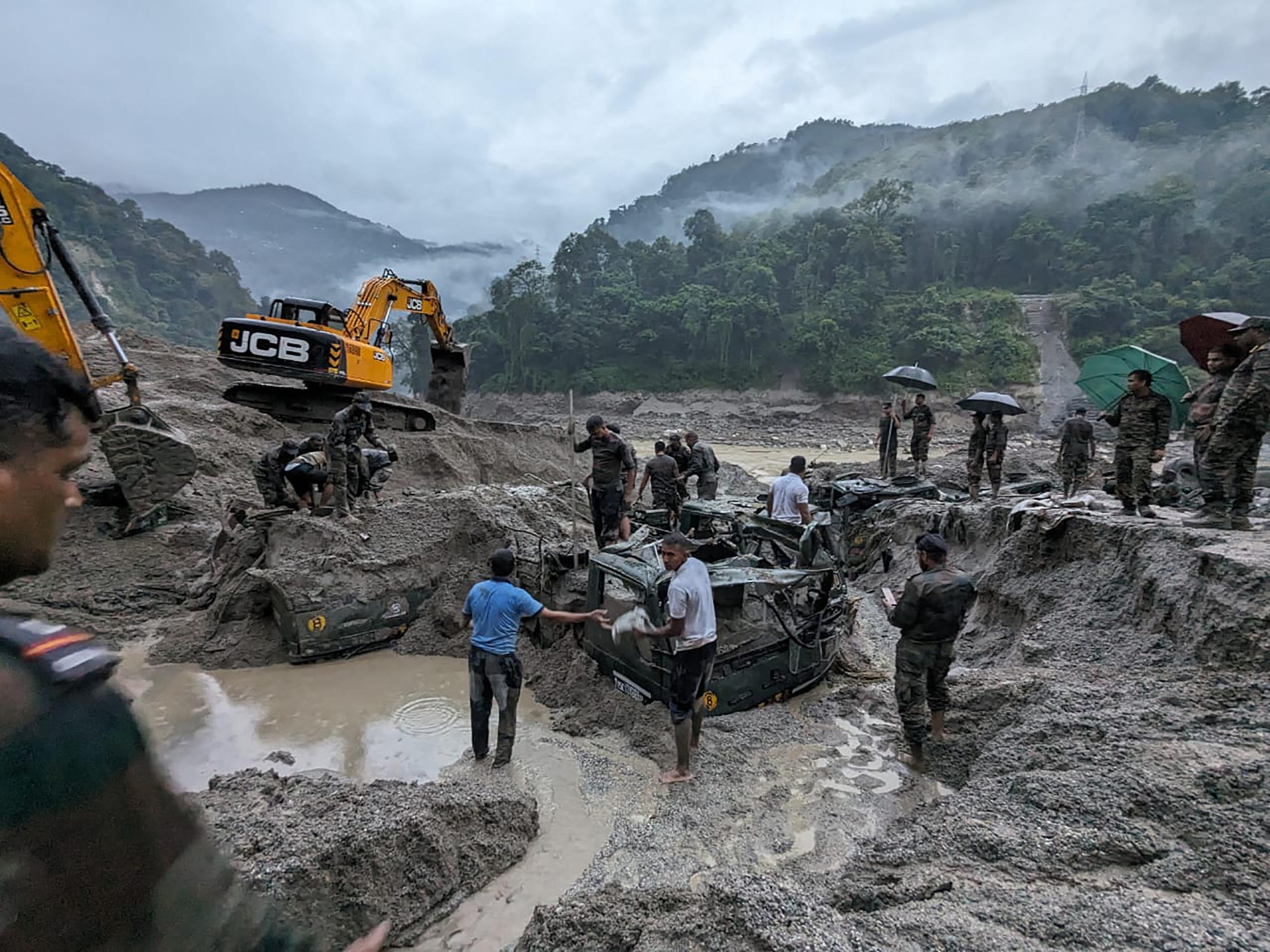 This handout picture released by India's Ministry of Defence on Oct 5, 2023, shows Indian army personnel conduct a search operation for the missing soldiers in north Sikkim. (INDIA'S MINISTRY OF DEFENSE / AFP)
This handout picture released by India's Ministry of Defence on Oct 5, 2023, shows Indian army personnel conduct a search operation for the missing soldiers in north Sikkim. (INDIA'S MINISTRY OF DEFENSE / AFP)
KOLKATA, India - Indian rescue teams are finding it difficult to reach flood-hit areas in the north-eastern state of Sikkim where more than 140 people are missing because the region is still experiencing bouts of heavy rain, officials said on Saturday.
The Lhonak Lake burst its banks on Wednesday after a cloudburst triggered torrential rains and an apparent avalanche, causing major flooding in the Teesta river.
The death toll has risen to 44, up by 2 from Friday, according to a government official overseeing rescue operations from Gangtok, the state's capital
"We are waiting for weather conditions to improve as only then air force and other rescue teams could venture into the flood-hit areas," said V.B.Pathak, the state's chief secretary.
The death toll has risen to 44, up by 2 from Friday, according to a government official overseeing rescue operations from Gangtok, the state's capital.
ALSO READ: Himalayan lake flooding in India kills 18, nearly 100 missing
Hundreds of search and rescue personnel have been deployed across Sikkim and in the northern parts of the neighboring West Bengal state. Areas near the river remain on high alert. Fifteen army personnel are among those reported missing.
About 2,000 tourists clustered in the Lachung, Lachen and Chungthung areas in north Sikkim were reported to be safe and the army has provided satellite phones so they can communicate with their families, said another official.
At least 13 bridges were washed away, hampering rescue operations. All bridges downstream of NHPC hydropower station Teesta-V have either been submerged or washed away.
ALSO READ: India's monsoon rains hit five-year low due to El Nino
A key highway that linked Sikkim with Siliguri in West Bengal also collapsed due to the floods.
Local lawmakers were looking at whether trekking routes could be used to reach disaster-hit areas, said Bandana Chettri, a spokeswoman for the state's tourism ministry.
The floods were one of the worst disasters in the region in more than 50 years and the latest in a series of extreme weather events that have caused widespread damage in South Asia's Himalayas and which scientists have said are due to climate change.


